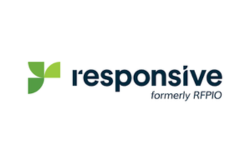
The Critical Importance of Patch Management: Safeguarding Against Threats Like CVE-2024-38063
In today’s rapidly evolving digital landscape, effective patch management is not just a best practice—it’s a necessity. The recent disclosure of CVE-2024-38063, a critical Remote Code Execution (RCE) vulnerability affecting Windows systems with IPv6 enabled, underscores the importance of timely patching. While this vulnerability has been patched, it serves as a stark reminder of what can happen when systems are left exposed. In this blog post, we’ll explore the significance of patch management, drawing on insights from the Tech Takeaway podcast, where Jason and Paul discuss the vital role, it plays in cybersecurity.
What Is Patch Management?
Patch management is the process of regularly updating your systems, applications, and devices to protect them from vulnerabilities. It’s a crucial defence against potential exploits, such as the one posed by CVE-2024-38063. This particular flaw, which allowed attackers to execute arbitrary code remotely by exploiting how Windows processes IPv6 packets, could have led to catastrophic system compromises if left unpatched. By applying the latest updates, organisations can close these security gaps before they can be exploited.
The Crucial Role of Patch Management in Security
Unpatched systems are a significant source of security breaches. As highlighted in the Tech Takeaway podcast, it’s shocking how many organisations fall victim to attacks due to outdated software. Even when patches are available, they often go unimplemented for years, leaving systems vulnerable. The swift release of a patch for CVE-2024-38063 by Microsoft demonstrates the importance of being proactive in patch management. Regular updates can prevent the exploitation of vulnerabilities, reducing the risk of ransomware, data breaches, and other cyber threats.
Common Challenges in Patch Management
Patch management isn’t without its challenges. Many assume that running regular Windows updates is sufficient, but as Jason points out, this is a dangerous misconception. Effective patch management requires attention to all software layers, including third-party applications, firmware, and network devices like IP cameras and printers. The complexity of managing updates across a large network can make this process daunting, particularly without the right tools.
Best Practices for Effective Patch Management
To protect your organisation, consider the following best practices for patch management:
- Systematic Updates: Develop a structured approach to ensure all devices are regularly updated.
- Use of Tools: Employ tools like WSUS for Windows environments and third-party solutions for comprehensive patching.
- Prioritisation: Focus on high-risk vulnerabilities, but don’t neglect lower-risk patches.
- Testing and Backup: Always test patches on a few devices before full deployment and have a backup plan in place.
The Role of Automation and Tools in Patch Management
Automation is a game-changer in patch management. With specialised tools, organisations can manage updates across even the most extensive networks, ensuring that all systems—including remote devices—are up to date. These tools not only streamline the process but also reduce the risk of human error, making it easier to maintain a secure network.
Conclusion
The discovery and swift patching of CVE-2024-38063 highlight the critical importance of patch management in today’s cybersecurity landscape. By keeping systems updated, organisations can protect themselves against the latest threats and ensure business continuity. As Jason and Paul from the Tech Takeaway podcast advise: “Patch, patch, patch!”
Act Now
Don’t wait for a security breach to reveal gaps in your patch management strategy. Implement a robust process today to keep your systems and data secure. If you need assistance, our team offers tailored solutions to streamline and automate your patch management, helping you stay ahead of potential threats. Contact us to learn more about how we can support your cybersecurity efforts.
Check out our Tech Takeaways podcast episode titled 'Mastering patch management' where hosts Paul and Jason look into common challenges and misconceptions as well as impact on users and businesses.









